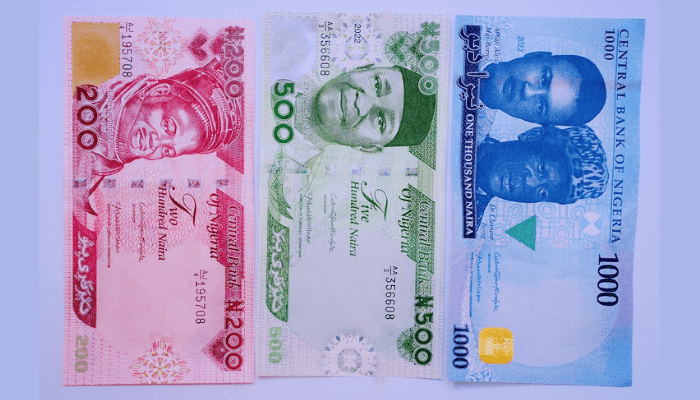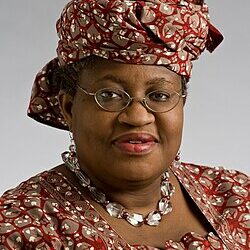The cumulative positive impact may be greater than expected. Beyond helping the fiscal and monetary authorities to have a better view of likely illicit funds within the economy and effectively track each banknote, unveiling the high-denomination banknotes may be the magic wand to advance Nigeria’s economic development and improve the value of the naira.
When the most sort out for new naira notes were eventually unveiled to the public by President Muhammadu Buhari recently, not a few economic experts expressed hope that the very strong issues that constantly posed challenges to the value of the currency would now be tackled headlong, including a record significant counterfeiting of the higher rates.
The challenges primarily include: significant hoarding of banknotes by members of the public, with statistics showing that over 80 per cent of currency in circulation are outside the vaults of commercial banks; worsening shortage of clean and fit banknotes with attendant negative perception of the CBN and increased risk to financial stability; increasing ease and risk of counterfeiting evidenced by several security reports.
Across the world, the act of banknote redesign is mainly aimed at achieving specific objectives focused on improving security of banknotes, mitigating counterfeiting, preserving the collective national heritage, controlling currency in circulation, and reducing the overall cost of currency management. According to the authorities, the new notes are enabled with strong security features.
Besides its many gains, redesigning national currencies is a global practice. In response to critics who frowned a redesign of its currency sometimes past, the United States said it redesigns U.S. currency to stay ahead of counterfeiting threats and keep counterfeiting levels low.
In the U.S., the Federal Reserve, together with its partners at the Treasury Department, its Bureau of Engraving and Printing, and the United States Secret Service, continuously monitor the counterfeiting threats for each denomination of U.S. currency and make redesign decisions based on identified threats. An inter-agency committee makes recommendations on design changes to the Secretary of the Treasury, who has final authority for U.S. currency designs.
Indeed, recent development in photographic technology and advancements in printing devices have made counterfeiting relatively easier. The recent currency redesign would partly help to achieve economic gains, according to experts.
Although the designs of the new notes have been partly labeled “poor job,” Nigerians should be willing to make the trade-offs required to deliver on the mission to improve value of the naira, tightening security of the banknotes and mitigating counterfeiting. The choice would be made between prioritising financial system, economic growth and financial inclusion; and prioritising the irrelevant issue of colour as a determinant of worth of the currency.
President Muhammadu Buhari hit the right at the unveiling of the new naira notes during a moderate ceremony at the State house when he said that apart from the fact that the new banknotes have been fortified with security features that make them difficult to counterfeit, it has also created jobs for Nigerians, while pointing to Nigeria’s silent technological advancement.
Not many people are aware that the redesigned naira notes are locally- produced by the Nigerian Security Printing and Minting (NSPM) Plc.
Like many others, President Buhari is optimistic that the high-denomination banknotes would help the Central Bank design and implement better monetary policy objectives as well as enrich the collective memory of Nigeria’s heritage.
With the unveiling of the new notes before the initial December 15 set date, it’s now clear that the central bank is serious about its mission to have more secured, valued and respected high-denomination banknotes as is the case of the U.S. dollars.
CBN governor Godwin Emefiele last Tuesday maintained that the bank will not shift the January 2023 deadline for the existing notes to be acceptable as legal tender. He was responding to critics who said the six-week window provided was too small. Others also argue that the timeline would hurt the rural poor who do not have easy access to bank branches.
There had been object in some quarters as some critics say that the six-week window will cause stamped at banks. Others also argue that the timeline would hurt the rural poor who do not have easy access to bank branches.
“The answer remains no, capital No! We will not shift any deadline,” the CBN governor said when asked if the central bank was going to shift the deadline. He said what the bank has done is in tandem with the law. Emefiele said the almost 100 days window for people to return the old currencies is enough for any person in any part of Nigeria to deposit his/her money.
On whether the bank has made adequate provisions to make sure that those who have cash are able to deposit their cash in the banks, Emefiele said: “my answer is yes.”
On 26th of October when he made the announcement of the introduction of new notes, Emefiele said all banks will keep their currency processing centres open from Mondays to Saturdays. He said that CBN has 36 core processing centres all over the country.
The CBN governor said as of October 2022, agency banking network in Nigeria has increased to 1.4 million, in almost all the local governments of the country. “I definitely cannot see any reason why anybody would say that he needs an extension because he can’t deposit his money in the bank. It will if you’re in a rural area and the rural areas are the agency networks is like saying that we have worked on for currency points are over the country,” he stated.
Emefiele and his team have a clear court aim for the naira. The director, banking supervision at the CBN, Haruna Mustapaha told journalists last week that the central bank is planning to reduce the volume of the high-denominations in circulation when the redesigned bank notes are circulated to discourage hoarding and counterfeiting.
“We may not have so much in that denomination,” Mustapha said. Currently, there is about 80 per cent of the money in circulation is high-denominations. Approximately N2.9 trillion that is both inside bank and outside being constituted by two denominations as N500 and N1000, he stated. What that means is that the higher denominations that have been a common sight may soon become scarce currencies.
“We want to drive the cashless policy want to reduce costs of doing currency management because you have to carry this money across the 37 branches we have and it’s costing us money,” Mustapha stated.
While some complaint about the design of the banknotes, economic experts who spoke with this newspaper generally agreed that the CBN has not done any wrong on the issue. When the US dollar was changed, there was not much difference between the new notes and the old notes, but the security features were more to make it harder to forge and that was what I was expecting from the CBN.
Meanwhile, while some expected wholesome changes to the N200, N500 and N1000 notes launched yesterday, others appreciated the motive of the change rather than aesthetics, as long as they are legal tender.
A chartered accountant, Adeola Oyebamiji, who works in Lagos, said, “At first glance, the new notes look like a lazy work but upon further reflection, I realise the aim of the currency redesign is bigger than its aesthetics and we will get used to it with time.”
Head of financial institutions ratings at Agusto&Co, Ayokunle Olubunmi, on his part, said he was more concerned about the security features included in the new notes.
According to him, one of the reasons given for the change of currency was due to the ability of criminals using new technology to forge the naira notes.
“I did not have any major expectation for the new notes other than improved security features,” he said, while raising concern about the security features of the new notes, an issue the apex and President Buhari said shouldn’t cause any anxiety.
While Olubunmi said the issuing of new notes required the CBN to carryout public sensitisation through jingles on radio, television and newspapers on the security features that people should watch out for, others say that would expose the notes to counterfeiting.
As it stands, both local and international public are eagerly waiting for the December 15 for the formal availability of the currencies for public use.





